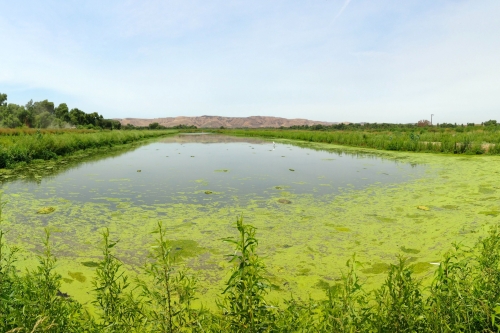Professor David Sedlak investigates using constructed wetlands as a cost-effective wastewater treatment. He is joined by CEE PhD students, Rachel Scholes and Aidan Cecchetti.
Typical wastewater treatment plants can only remove around 50 percent of antibiotics in the water. Other techniques, such as reverse osmosis, are more effective; however, this technique is too expensive and energy-intensive to be used in wastewater treatment plants across the country.
Professor David Sedlak is searching for more cost-effective alternatives for treating wastewater. One possible solution is constructed wetlands. Constructed wetlands are pools of standing water that serve as “natural filters” for unwanted chemicals.
Sedlak designs several types of wetlands, including open-water wetlands, which use sunlight for contaminant degradation, as well as subsurface wetlands, which treat water below ground. Both techniques act as a “polishing” step in wastewater treatment. They are one of the final steps in removing low-concentration contaminants, such as medical drugs, from wastewater before its re-release into waterways.
See Nature's Water Filter (Berkeley Science Review, 11/28/16)
Photo credit: Scott Nygren, Orange County Water District

